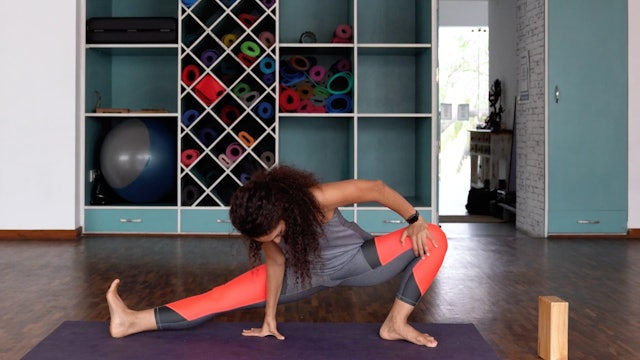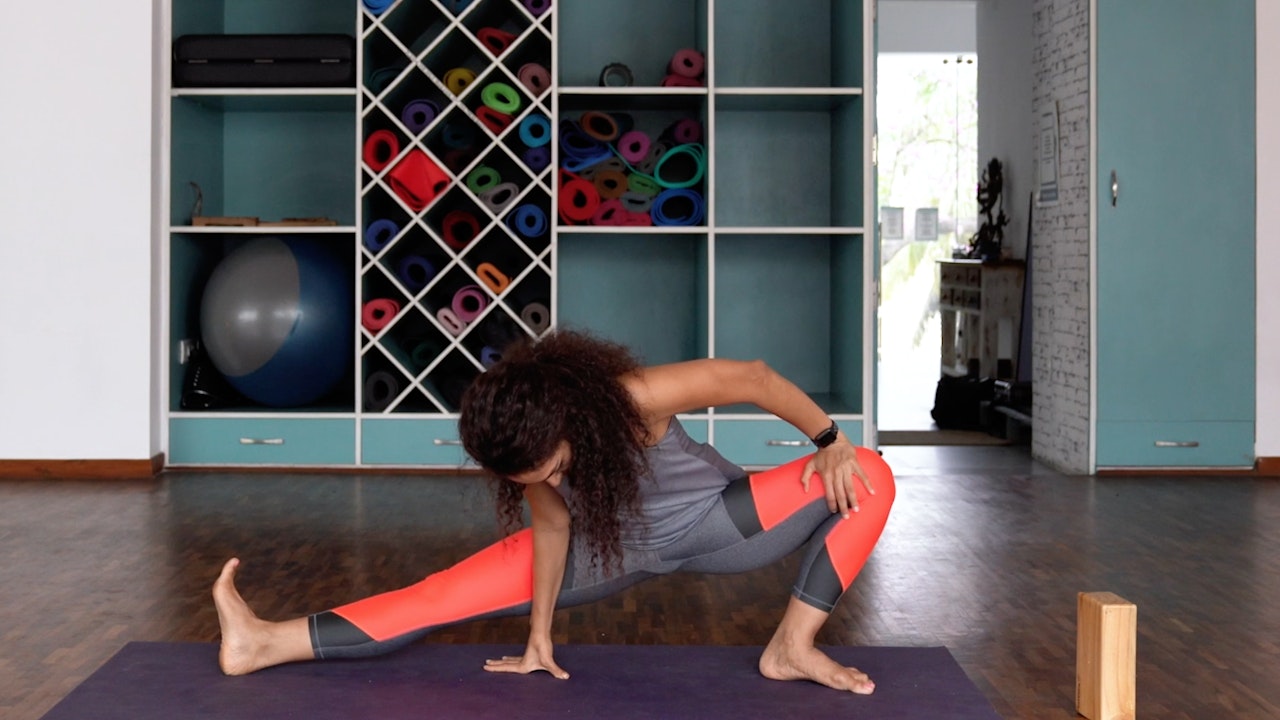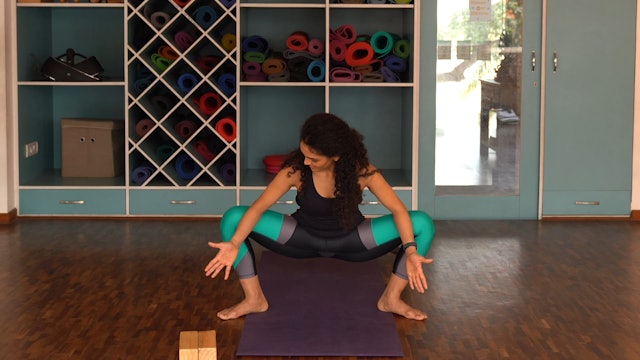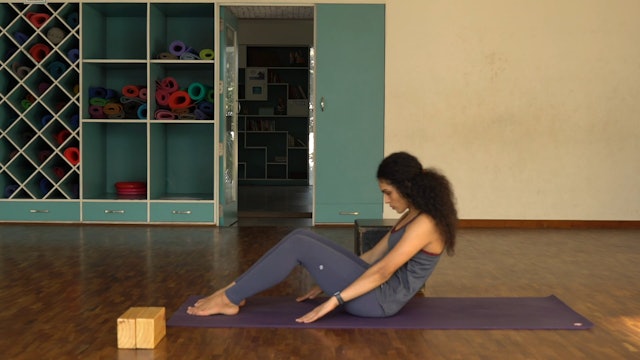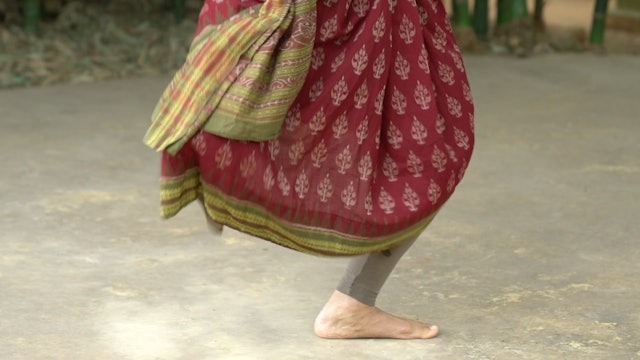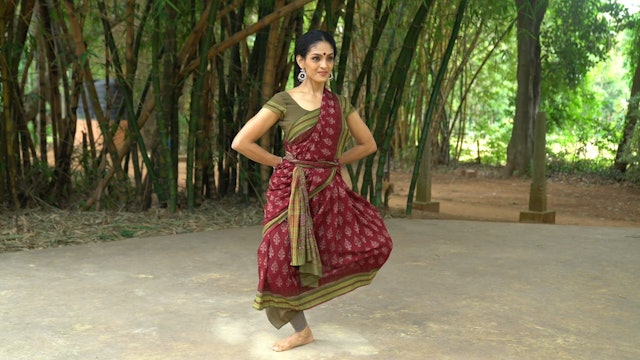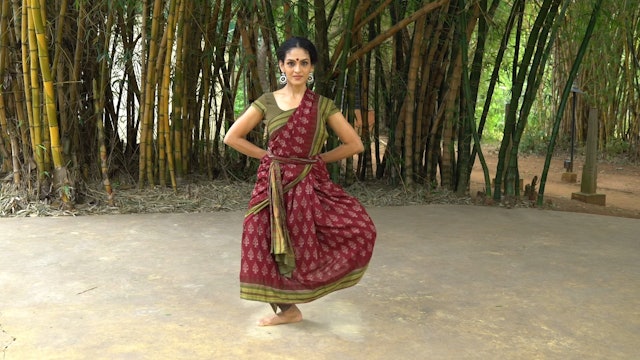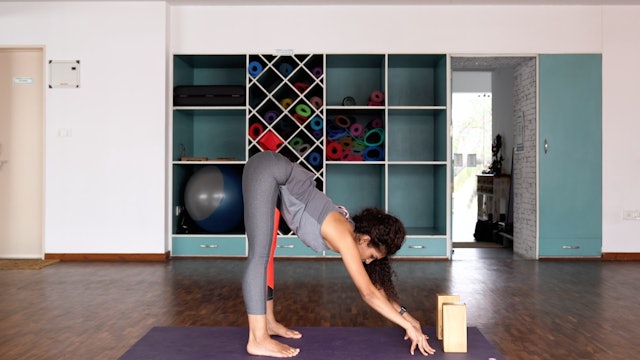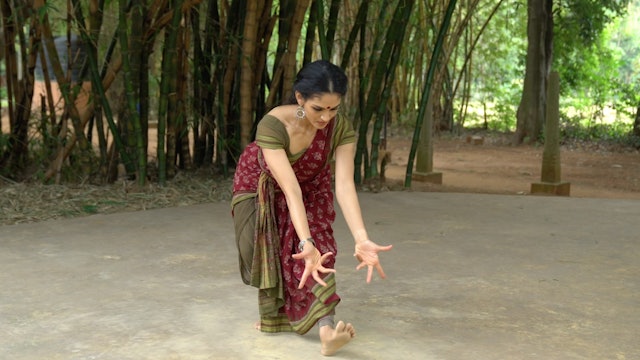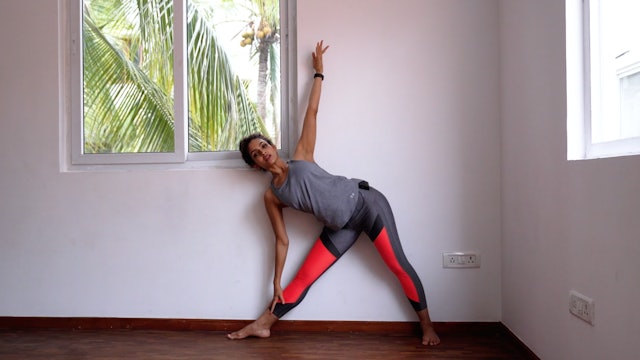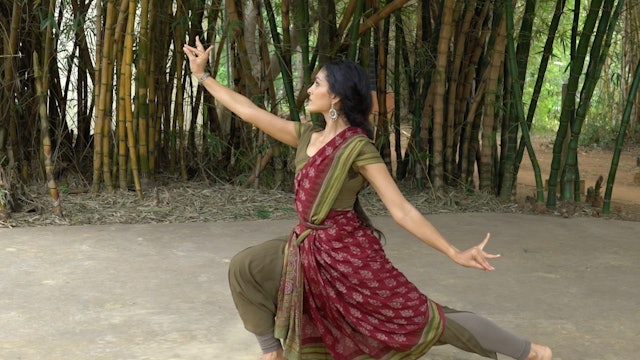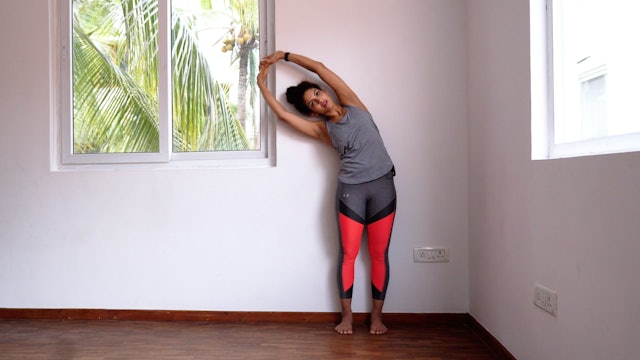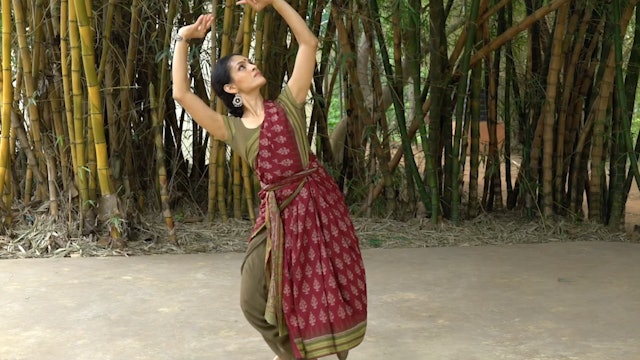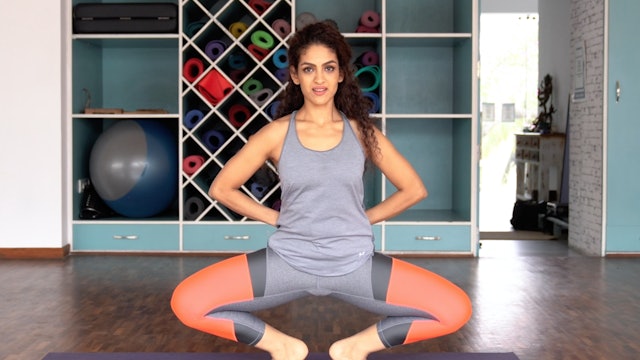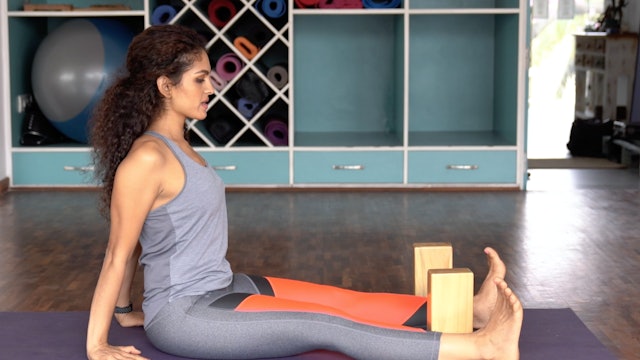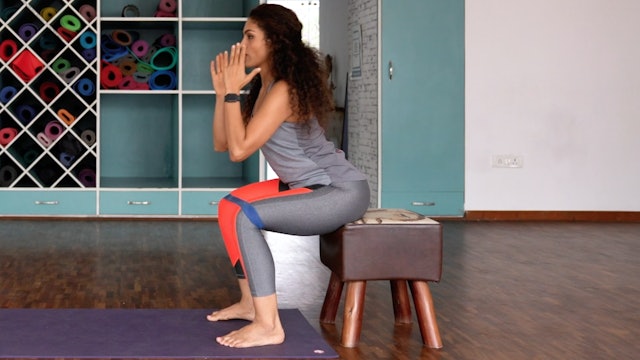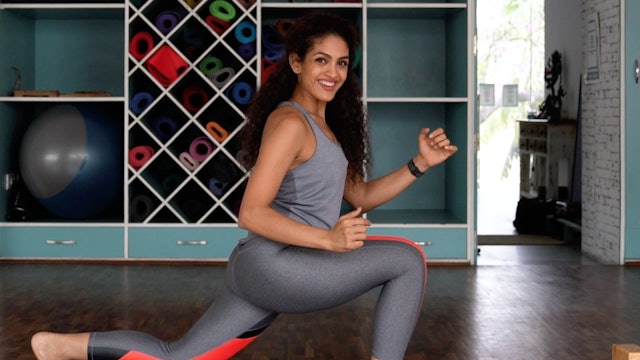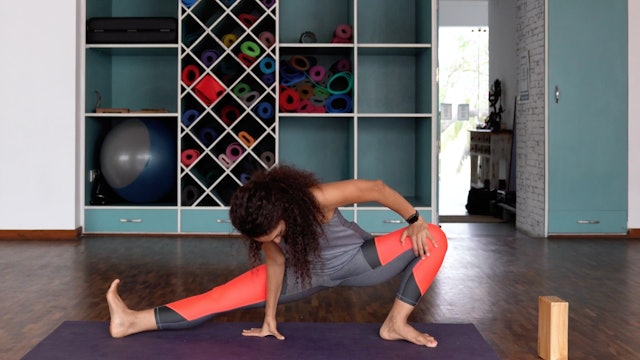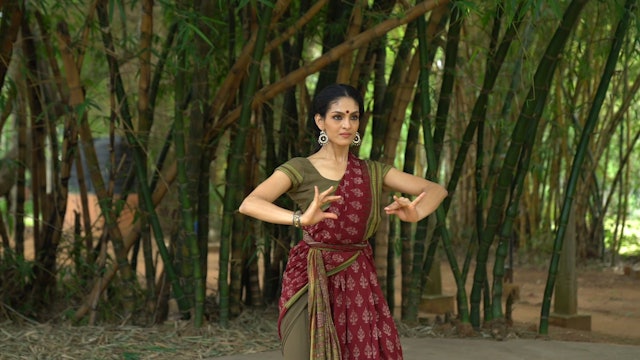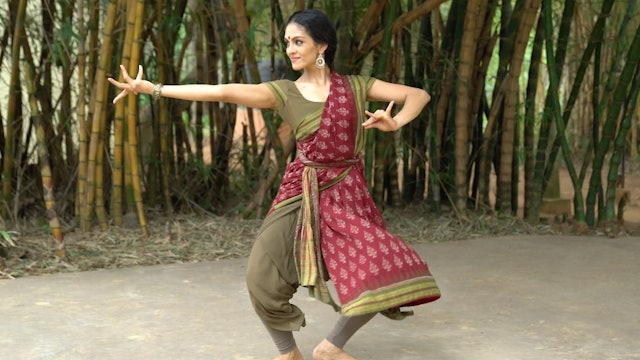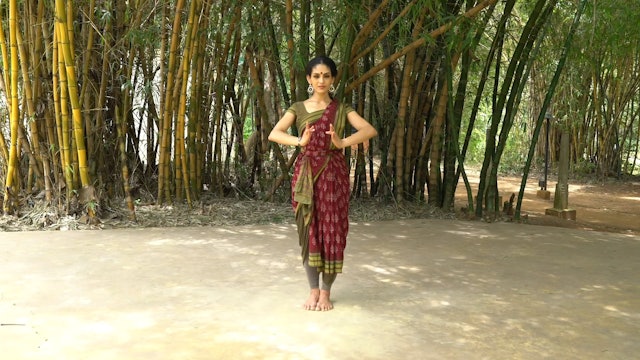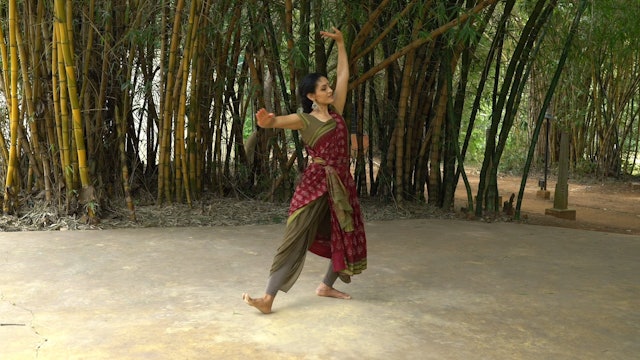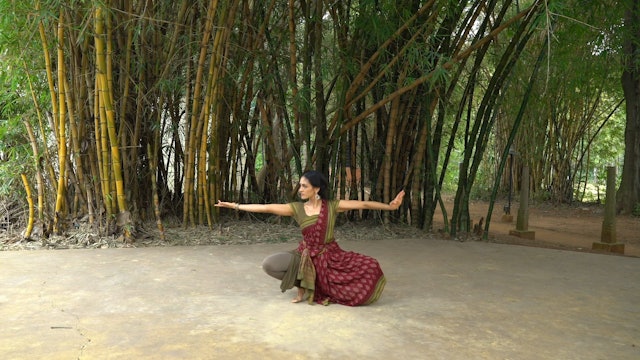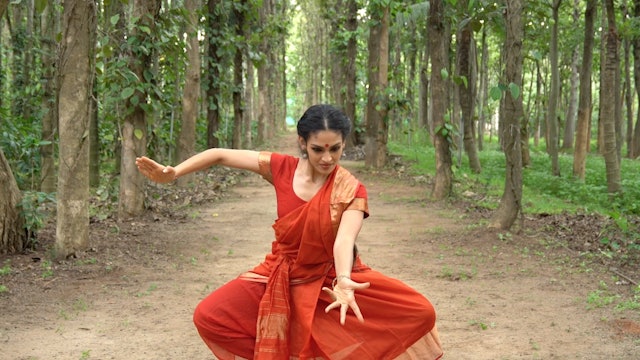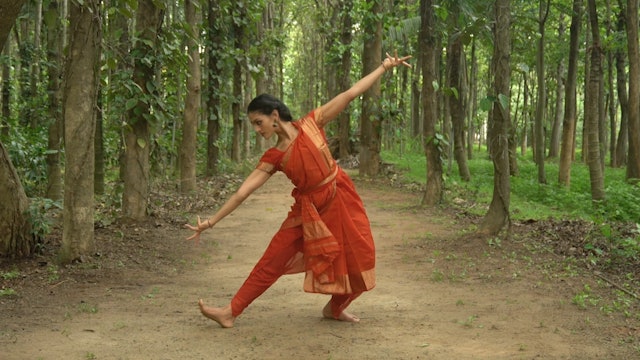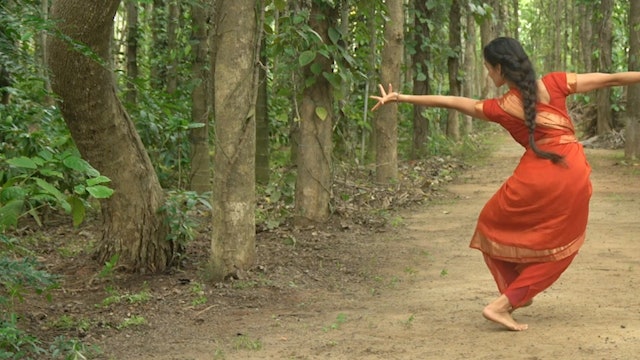-
Hip Openers
This series can be practiced after a basic warm up, before beginning an Adavu practice.
The hip opener series will help you navigate through tight hips. It will help you mobilise your hips and enable you to push your thighs back while sitting in Araimandi. Please do this in combination with str...
-
Obliques, flat backs and legs
This introduces the flat back and builds muscles in the back. It is recommended that you do this sequence after you lengthen your hamstrings to prevent your back from curving. It also introduces a lowering action on your quadriceps which will help build stronger legs.
The flexibility series tha...
-
Thattadavu 1
The Thattadavu introduces concepts of rhythm to the beginner student through various patters of striking the floor with the foot. Do these in sequence to progressively build clarity in the articulation of the foot with the floor. Keep your hips stable and try not to move from side to side. It is ...
-
Thattadavu 3
The Thattadavu introduces concepts of rhythm to the beginner student through various patters of striking the floor with the foot. Do these in sequence to progressively build clarity in the articulation of the foot with the floor. Keep your hips stable and try not to move from side to side. It is ...
-
Thattadavu 5
The Thattadavu introduces concepts of rhythm to the beginner student through various patters of striking the floor with the foot. Do these in sequence to progressively build clarity in the articulation of the foot with the floor. Keep your hips stable and try not to move from side to side. It is ...
-
Bends 1 : Front
The Raadha Kalpa Method has analysed and broken down the various torso movements into a system of bends that are different from one another. The musculature that is engaged in each bend is different and the stability necessary for execution is also different.
This introduces the front bend.
-
Naatadavu 3
The third Naatadavu stretches the leg out to the front. If you are unable to keep your back straight when doing this, please refer to the flexibility section and practice the tips for forward bends and try again.
-
Bends 3 : elongated side
The Raadha Kalpa Method has analysed and broken down the various torso movements into a system of bends that are different from one another. The musculature that is engaged in each bend is different and the stability necessary for execution is also different.
This introduces the second side bend.
-
Naatadavu 4
The 4th Naatadavu expects a little more stability in the body. Please practice any of the Strength sections that work on lunges and squats, to achieve a deep lunge in this Adavu.
-
Bends 2: Side
The Raadha Kalpa Method has analysed and broken down the various torso movements into a system of bends that are different from one another. The musculature that is engaged in each bend is different and the stability necessary for execution is also different.
This introduces the first type of s...
-
Pakkadavu 3
Pointers for Pakkadavu 3:
Keep your shoulders down when lifting your arms.
Make sure your arms do not go too far back.
Follow your arm and keep your gaze toward the wrist of the arm you are bending away from.
Make sure you keep your thighs pushing back while retaining Swastikam in your feet.
... -
Aramandi Tips 4
This series will deal with a number of exercises that will work with developing a strong and stable Araimandi. It will also help resolve issues with knee and ankle pain. It must be practised in combination with the Hip openers and Leg strength for maximum benefit.
-
Knee Alignment 4
Align your knees and stay safe. These videos will help you reinforce alignment and thus help you employ proper usage of the knee joint through movement. The videos will address common misnomers as well as small strengthening exercises that can be practised on days that you do not dance. Try to re...
-
Knee Alignment 5: Squat with resistance band and chair
This video will address knee alignment during a squat, while simplifying the exercise for those who need to work slowly.
Align your knees and stay safe. These videos will help you reinforce alignment and thus help you employ proper usage of the knee joint through movement. The videos will addre...
-
Knee Alignment 6: Lunges and variations
This video will address knee alignment during a lunge, while adding variations that challenge the strength during movement.
Align your knees and stay safe. These videos will help you reinforce alignment and thus help you employ proper usage of the knee joint through movement. The videos will add...
-
Knee Alignment 7: Alidam
This video will address knee alignment in Alidam, while simplifying the exercise for those who need to work slowly.
Align your knees and stay safe. These videos will help you reinforce alignment and thus help you employ proper usage of the knee joint through movement. The videos will address com...
-
Pakkadavu 1
Pointers for Pakkadavu 1:
Watch the level of your arms. Make sure you maintain the length of your neck. Turn to the side with your head straight, without tilting. Keep your eyeballs in the centre of your eyes. When you reach to the side, do not raise the opposite elbow. maintain length.
The ...
-
Paraval Adavu 1
Paraval literally means to spread. Some schools of thought also call the Paraval adavu, the 'Pakkadavu' as it moves to the side while sliding. Some others change the name based on the way the foot articulates with the floor. A few of the types of Paraval, can be referred to as Marditam adavau, as...
-
Theermana Adavu 3
The Theermana or Makutadavu, is placed at the end of a Korwe or Jathi in specific rhythmic patterns, to create an ending.
The leg is either placed outstretched directly in front or at a diagonal of 45 degrees. The foot is flexed and the heel strikes the floor. In the Raadha Kalpa method we begi...
-
Theermana Adavu 3, variation
The Theermana or Makutadavu, is placed at the end of a Korwe or Jathi in specific rhythmic patterns, to create an ending.
The leg is either placed outstretched directly in front or at a diagonal of 45 degrees. The foot is flexed and the heel strikes the floor. In the Raadha Kalpa method we begi...
-
Mandi 1st speed
The Mandi Adavu gets it's name from the movement that involves the knee being placed on the ground alternately.
It is very important to do the exercises that strengthen the legs substantially and do all the exercises for Araimandi for a long period of time before embarking on this Adavu.
Boun...
-
Khanda Chapu Korwe 1
Please watch the subsequent Talam lectures that incorporate Gati and Yati and revisit this korwe.
The Korwe series continues with a variety of Talams. This is the first Korwe in Khanda Gati that has rhythmic layers of other counts for the adavus on top of the 5 count base.
Gati refers to an int...
-
Adi Tala Korwe 1
Please watch the first three lectures on Talam before beginning the Korwe series. There is an instruction video for each Korwe.
A Korwe is a set of adavus that are formatted to a specific rhythmic structure, ending with a Muktayam/Teermanam adavu and layered on a Swara like in a Jatiswaram or Ta...
-
Adi Tala Korwe 2
Please watch the first three lectures on Talam before beginning the Korwe series. There is an instruction video for each Korwe.
A Korwe is a set of adavus that are formatted to a specific rhythmic structure, ending with a Muktayam/Teermanam adavu and layered on a Swara like in a Jatiswaram or Ta...
